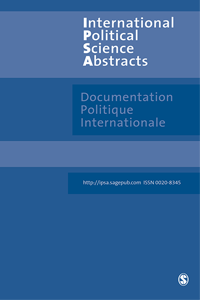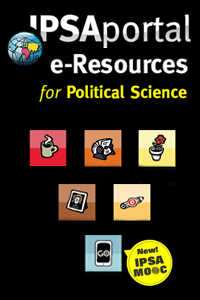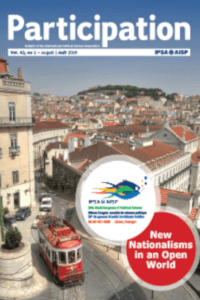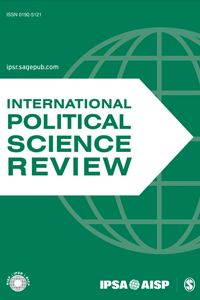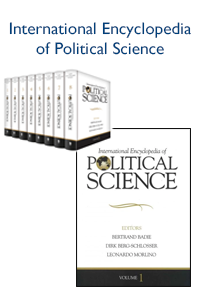A History of IPSA
Prologue: Political Science, a Postwar Product (1947-1949)
Recalling the Sophists who approached Socrates with the argument that motion did not exist, to which the philosopher replied by merely arising and starting to walk, so Unesco had transformed speculative and theoretical arguments as to the existence of a political science into action by calling the present conference.
Maurice Duverger at the founding conference of the IPSA,
12 September 1949
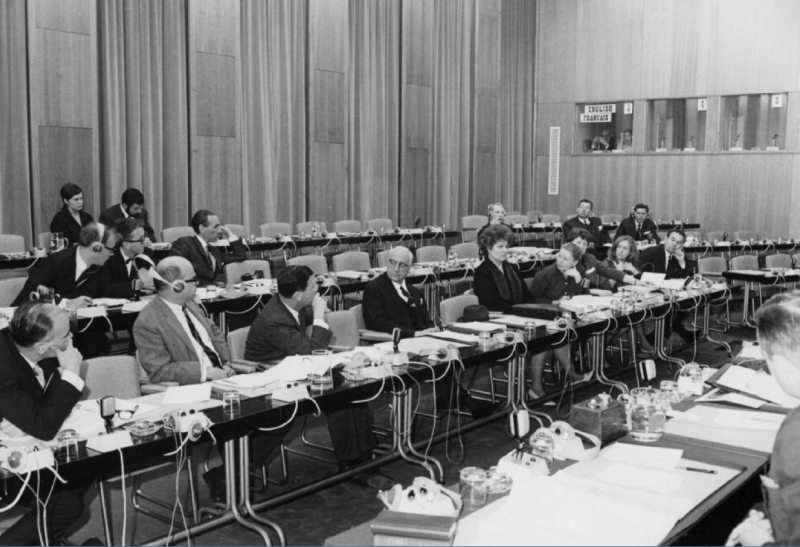
It is hard for political scientists of 2009 to imagine the condition and status of their discipline in the world under reconstruction of 1949. In place of the familiar, well-structured web of national associations we know today, there were associations only in the United States (founded in 1903), Canada (1913), Finland (1935), India (1938), China (1932), and Japan (1948). Communication between them was virtually nonexistent, although they were aware that they were not alone in the world. What little (minimal) international cooperation in political science there was occurred through the Academy of Political Science and Constitutional History, an organization Jean Meynaud would later decry as an "instrument of personal politics” conducting "extremely limited” activities1. The very definition of "political science” was uncertain, and the relevance of any distinction between philosophy, the social sciences, and the humanities was the subject of debate.
The desire of the new United Nations Educational, Scientific and Cultural Organization (UNESCO) to stimulate development of the social sciences therefore necessarily gave rise to an enterprise that had both intellectual and institutional aspects. The intellectual outlines of the project were drawn at UNESCO’s first general conference in December 1946 by the Social Sciences, Philosophy and Humanistic Studies Sub-Commission, a very heterogeneous body comprising a Philippine historian as chairperson, a Polish novelist and a Chinese linguist as vice chairs, and an American sociologist and a Danish philosopher as rapporteurs. After debating the issues, the Sub-Commission took note of the distinction between "social science" on the one hand and "philosophy and the humanities" on the other. Drawing on the theme enunciated by US President Franklin Roosevelt that "if civilization is to survive, we must cultivate the science of human relations," it assigned the social sciences the task of furthering friendship between peoples by promoting mutual understanding and fostering the removal of such obstacles as "nationalism, antagonisms of a technological character, insufficiency of government action, problems relating to movements of population or relations of dependency between two peoples."2
Subsequent general conferences further refined this highly political project, and in 1948, seven priority topics for research were identified. Four amounted to a reassertion of the peace-making potential of the social sciences: the study of "tensions affecting international understanding"; the "philosophical analysis of current ideological controversies"; the "study of international collaboration"; and an enquiry into the "humanistic aspects of culture." Two other topics, "social implications of science" and "scientific and cultural history," made it clear that the young social sciences were to be a tool for controlling the natural sciences, following on the disillusionment brought on by their exploitation for military purposes. One area of research alone was only indirectly related to the demands of reconstruction; the object of the project "methods in political science," was:
To promote the study of the subject-matter and problems treated by political scientists of various countries in recent research materials..., the various types of approach and emphasis, the methods, techniques and terminology employed and the quantity of production in recent political science.3
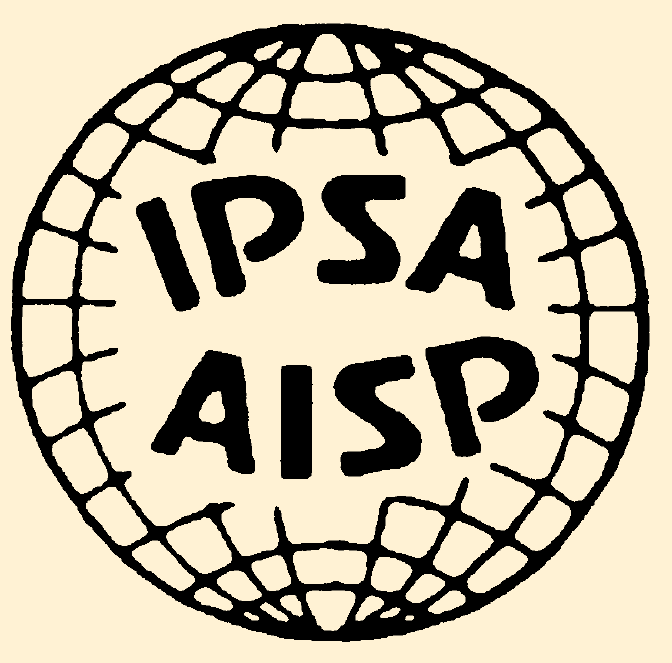
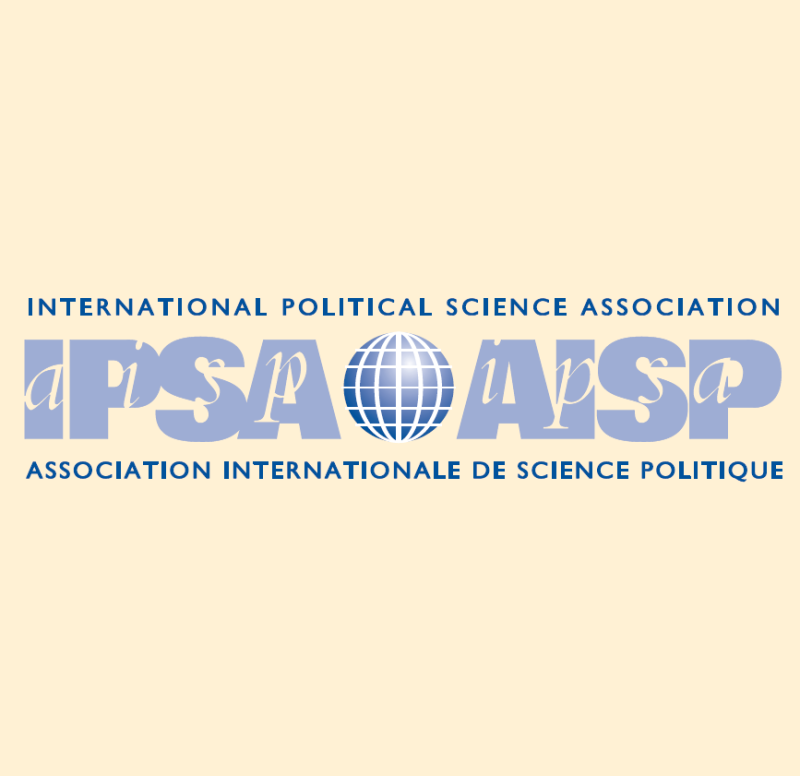

It is somewhat surprising that a project would be so specifically targeted at the field, for it was hardly to be expected that such a pioneering course of action would be laid out for an as-yet embryonic discipline whose very legitimacy was contested. Yet, as far as UNESCO was concerned, the priority being given methodological issues was amply justified by the research questions that political science was to ponder. Since political science was to study a political realm that was held responsible for the collapse of the world order, it was urgent that it be given the means both to study and to reform the defective institutions.
The professionals who met for the first time in Paris on 16 September 1948 embraced this mission in the summary of their proceedings:
The large and expanding sphere of government activity in all countries, and the emotions and interests which are aroused by politics, make it highly desirable that both political ideas and political practice should receive disinterested study. It is the aim and purpose of political science to provide such study. It is legitimate to believe that by this means the political insight and discrimination of the people may be increased, a more informed public opinion brought to bear on political problems, and the work of government improved at all levels.4
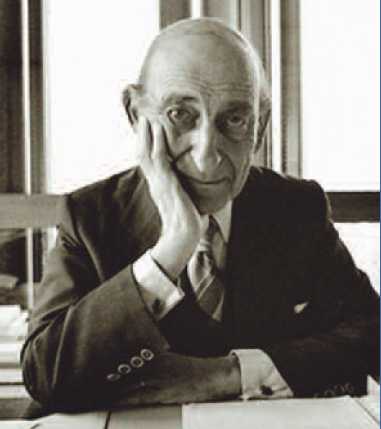
For the participants in the September 16 meeting, bringing this ambitious project to fruition meant establishing a dialogue between political scientists from different countries and disciplines. Unfortunately, although the idea behind the project was simple, it entailed major practical problems, for it involved nothing less than clearing a space on the international scene for a discipline whose autonomous status was barely acknowledged outside the United States. It further involved bringing political philosophers, political jurists, political historians, and political economists to work together and, in general, creating a semblance of unity out of extreme diversity.
Well aware of these difficulties, the eight participants were very circumspect and underscored the point that:
The aim of international cooperation… is not to substitute a uniform treatment of the subject for the prevailing diversity of topics and methods. The juridical, historical, philosophical, sociological…, psychological and statistical methods have all been successfully used in the study of political ideas and institutions....
Taking the heterogeneous membership of their group into account5, they showed consideration for most of their number when they came to define the four fields of study that were the province of political science. They thus acknowledged the influence of the philosophers with "political theory," the jurists with "government," the internationalists with "international relations," and the fledgling behaviorist school of American political science with "parties, groups and political opinion." They kept their objective of international collaboration well in sight, though. They perceived it as an absolute heuristic necessity that would, ultimately, lead to the development of "scientifically valid" criteria that would enable them to separate the wheat from the chaff in existing studies. Still, the concessions to the various "factions" put the project on an only somewhat more solid footing than before.
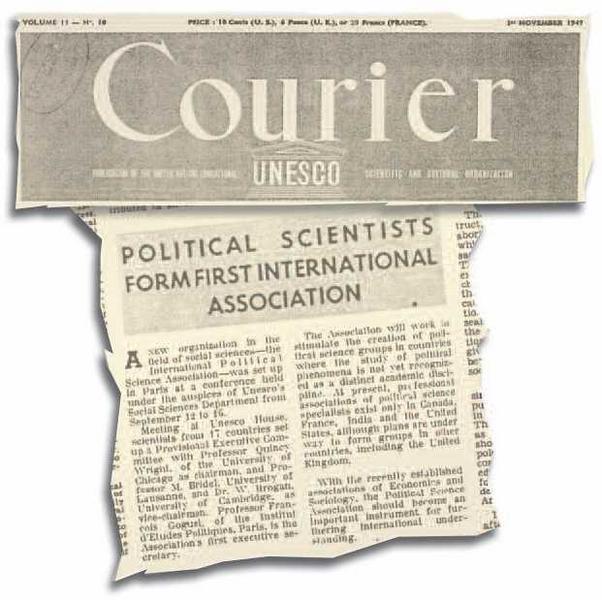
Despite its fragile underpinnings, the intellectual enterprise was coupled with an institutional one. To follow up on the 1948 General Conference decision to give organizational substance to the promotion of mutual knowledge among scholars, the creation of an International Political Science Association was given strong—and financial—encouragement. The researchers who met on 16 September 1948 thus imagined an IPSA that was consistent with their ambitions. They planned for an association that would have a wide range of tools at its disposal: an international documentation center, a research bulletin, an abstract service, translations of basic documents, international conferences, travel grants for researchers, and encouragements for international research projects. Everything, however, would be geared to a single goal: facilitating mutual knowledge in order to advance knowledge and, ultimately, "[encourage] in all countries... improved techniques of political organization." Implementation of this as-yet bare-bones project was Raymond Aron, head of the "methods in political science" project and chairman of the September 1948 and 1949 conferences in Paris assigned to a preparatory committee made up of Walter R. Sharp (United States, chairman), John Goormaghtigh (Belgium, secretary), Raymond Aron (France), William A. Robson (United Kingdom), Angadipuram Appadorai (India), and Marcel Bridel (Switzerland).
The project gained momentum in the year following the September 1948 conference. The first meeting spurred national communities to form associations so that they would carry some weight in the future IPSA from the very outset. France’s political science association was thus founded in 1949, while similar dynamics bore fruit soon afterwards in the United Kingdom, the Netherlands, Israel, Sweden (1950), Germany, Belgium, Mexico, and Greece (1951). At the same time, on the international level, the committee chaired by Walter Sharp set to work and produced extensive correspondence. Proposals for the constitution of the organization came thick and fast, but stumbling blocks outnumbered areas of consensus. The founding conference of the IPSA, which was held from 12 to 16 September 1949 in Paris, was thus no mere formality and had to settle some major issues.
Sixteen countries met at the conference; four (United States, France, Canada, and India) were represented by a delegate from their national Association. Given the problems mentioned earlier, it is hardly surprising that their debates came quickly to center on the relevance of even creating an IPSA, especially since an International Institute of Administrative Sciences (IIAS) was already operating in Brussels. It would be wrong to think this was merely an organizational issue; the very intellectual legitimacy of political science was at stake
The suggestion to create a joint secretariat for the IPSA and IIAS reflected doubt in the minds of some people that there was any real demarcation line between their respective fields of research.6 The need to differentiate themselves from the IIAS pushed the participants to distance themselves from the political agenda of UNESCO and to adopt an enforced positivism. In the words of Maurice Duverger:
It would be fatal to the future of political science to establish overclose relations with an Institute of Administrative Sciences. Such an institute [is] mainly concerned with administrative technique, that is to say, with problems of method, output and practice. The aim of the present Association [differs] in that it [proposes] to define sociological laws. Such a difference [is] the same as that between medicine, which [is] an art, and biology, which [is] a science, the latter enabling progress to be made in the former.7
This position was increasingly echoed over the course of the conference. D.W. Brogan even came to plead explicitly for the Association to "avoid an attempt to do all the things which Unesco does"; it should be an "academic body" and not "branch out into other fields."8 The participants thus intentionally tried to keep themselves at arm’s length from the world of political action. They treated the question of whether the intellectual pretentions of political science were legitimate as settled—if not absolutely at least sufficiently to meet their own immediate needs.
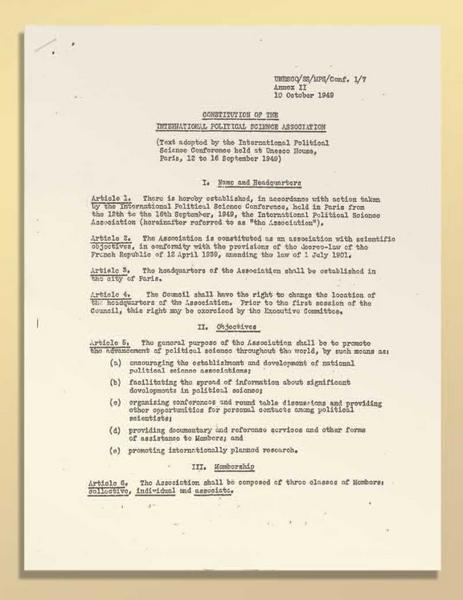
The debates could therefore now move on to organizational matters. Numerous decisions were made, which cannot be dealt with in any detail in this brief survey. However, we shall take a closer look at one of the most hotly debated and immediately consequential issues: the choice of a headquarters for the new IPSA.
The problem was not an easy one, for choosing a headquarters also meant choosing a legal framework, a working language, an executive secretary, and offices. Clearly, too, the choice meant acknowledging the host country in a way. Lastly, the choice imposed conditions on the composition of the Executive Committee; for reasons of both finance and the smooth operation of the Association, its members could not be based too far from the headquarters. The question of the location had already been raised but left unresolved by the preparatory committee and was the subject of long discussions over the course of the conference.
From the outset, there was unanimous agreement on only one point: the IPSA had to be located on the continent of Europe in order to foster development of the discipline there. This view was so widely shared that the American Political Science Association (APSA) voted a resolution to this effect on 29 December 1948.9
There remained the problem of which European city to choose. Three possible sites were proposed: Brussels, Geneva and Paris. Brussels was where the highly esteemed secretary of the preparatory committee, John Goormaghtigh, was from. However, it was already the site of the IIAS, and, as we have seen, the political scientists wanted to keep their distance from that body. Geneva had the advantage of offering, as Maurice Duverger put it, "political serenity" to an association that would have to deal with "'explosive' questions." But the city was already home to too many international associations and lacked a candidate for the job of secretary. In the end, Paris, the third option, which was proposed rather late in the discussions, carried the day. The French capital had in its favor the fact that it was already the site of UNESCO and that it had a candidate for the post of Executive Secretary in the person of François Goguel. Moreover, the Fondation Nationale des Sciences Politiques (FNSP) could provide the necessary logistic facilities.10 The IPSA was thus constituted as a "foreign association" under French law.
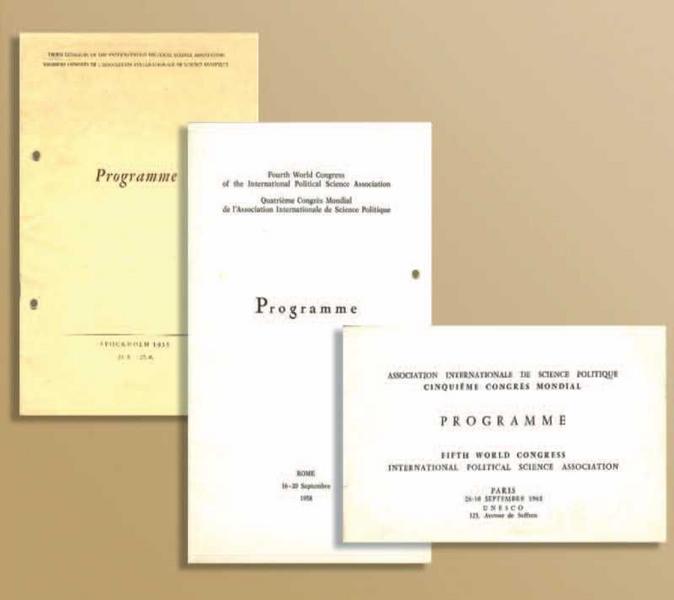
The selection of Paris led to the selection of a Provisional Executive Committee that included eight Europeans: Marcel Bridel (Switzerland, vice president), Denis W. Brogan (United Kingdom, vice president), Jan Barents (Netherlands), Fehti Celikbas (Turkey), Maurice Duverger (France), John Goormaghtigh (Belgium), Elis Hastad (Sweden), and Adam Schaff (Poland). Also members were two North Americans, Quincy Wright (United States, president) and Crawford B. Macpherson (Canada); one South American, Isaac Ganon (Uruguay); and one Asian, H. Khosla (India).
In late 1949, the committee and its Executive Secretary had to begin to put into place the structures that would enable the IPSA to take up the challenge laid out in its constitution: "[promoting] the advancement of political science throughout the world."11 The new Association thus had a single objective that entailed action on three fronts: building the organization, fostering the intellectual development of political science, and helping spread the discipline geographically.
Notes
1 Letter from Jean Meynaud to John Goormaghtigh, 22 September 1955. Translation.
2 UNESCO, General Conference: First session, Paris, UNESCO, December 1946.
3 UNESCO, Records of the General Conference of Unesco, second session, Mexico, 1947. Paris, UNESCO, April 1948.
4 UNESCO, International Conference on: Methods in Political Science, 13 September 1948–16 September 1948. Statement issued by the members of the Conference, 16 September 1948. Paris, UNESCO, 28 April 1949.
5 Raymond Aron (France), the conference chairman, was an agrégé in philosophy. Frede Catsberg (Norway), Georges Langrod (Poland) and William A. Robson (United Kingdom) were all professors of public law. G.D.H. Cole (United Kingdom) was a professor of social and political theory. John Goormaghtigh (Belgium) was the director of an institute of international relations. M. Rathnaswami (India) was a university vice-chancellor. Only Walter R. Sharp (United States) held the title of professor of government.
6 "Students of politics… should, however, distinguish between the analysis of verifiable facts and the formulation of value judgments.… Frequent contacts between the political scientists of different countries would stimulate awareness of these factors." (UNESCO, International Conference on: Methods in Political Science, 13 September 1948–16 September 1948, op. cit.)
7 UNESCO, International Political Science Conference. Summary Record of the second meeting, held at Unesco House, 19 Avenue Kléber, Paris 16e on Monday, 12 September 1949 at 2.30 p.m. Paris, UNESCO, 25 October 1949.
8 UNESCO, International Political Science Conference. Summary Record of the third meeting, held at Unesco House, 19 Avenue Kléber, Paris 16e on Tuesday, 13 September 1949 at 10 a.m. Paris, UNESCO, 25 October 1949.
9 American Political Science Association, Resolution recommended by the Committee on IR and approved in principle by the Executive Committee, 29 December 1948.
10 Unesco, International political science conference. Provisional Executive Committee of the International Political Science Association. Summary record of the first meeting, held at Unesco House on Thursday, 15 September 1949 at 2.30 p.m. Paris, UNESCO, 25 October 1949.
11 UNESCO, Constitution of the International Political Science Association (Text adopted by the International Political Science Conference held at Unesco House, Paris, 12 to 16 September 1949), Paris, UNESCO, 10 October 1949.
Building the Association
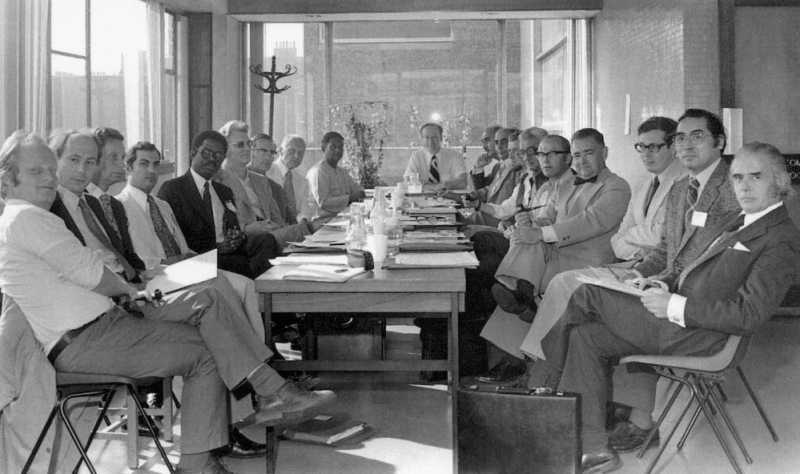
The purely organizational development of the IPSA proceeded along two tracks. The internal track involved drawing up a blueprint for the organization and setting up structures that would allow it to operate in a well-regulated, effective fashion. The external track entailed obtaining recognition from other organizations in order to ensure the Association’s legitimacy.
2.1. Setting up the structures
I consider that, currently, the most importanttask of the secretariat is to facilitate the formationof national associations. The IPSA will only trulybecome a robust, living reality insofar as it is truly a federation of vigorous national associations.[Translation]
Jean Meynaud
Executive Secretary of the IPSA,
16 March 1950.
The first articles of the constitution passed by the 1949 conference set out the responsibilities of the IPSA’s basic organs, the Council and the Executive Committee. They are the classic structures most such associations adopt: the Council is the general assembly of the IPSA, and the Executive Committee is the board of directors, elected by the Council for a term of three years. Under the constitution, the Executive Committee appoints the Treasurer and Executive Secretary, while the Council names the President. Sixty years of practice have brought about changes in these arrangements. Election of the President has thus regularly taken the form of the validation of a proposal by the Executive Committee, and, over the past few years, the name put forward has often been that of the outgoing first vice president. Incidentally, the office of vice president is the only real institutional curiosity of the IPSA, notably because of the vagueness that surrounds it. The number of vice presidents has varied, the procedures for appointing them have changed, and the responsibilities of the office are poorly defined. It has thus been the subject of discussions and constitutional amendments. It has even, at times, led to controversy and tension. For example, James Pollock, President of the IPSA from 1955 to 1958, argued that vice presidents had no greater prerogatives than any other Executive Committee member.
Debate about the office of vice president has been particularly problematic and recurrent, but arguments have also arisen over the remit, election procedures, and composition of other IPSA organs. The issue of the structure of Association membership has always lain, more or less explicitly, at the root of these disputes. Although consensus was reached in 1949 on the admission of three categories of members—collective, individual and associate— the methods of admission and the respective weight of the groupings in the decision-making processes of the IPSA were by no means selfevident. The associate members, comprising all those groups “pursuing objectives compatible with those of the Association in related fields of activity,” did not really pose much of a problem. Since they were not represented on the Council and therefore not involved in any power issues, questions respecting them were easily settled. Matters regarding the collective and individual members, though, were more complex.
It was clear from the beginning that the purpose of the IPSA was to constitute a federation of national associations and that the collective members were consequently to have predominant power. However, this position of principle was at odds with the actual state of political science in 1949. There were only four national associations among the founding members, making it inevitable that individual members would be admitted and that they would furthermore be given some weight in decision making.
The first question was how much weight to give them. How many Council seats ought to be allotted to individual members, particularly as compared to the number allocated to the collective members? The participants of the 1949 conference responded with two compromises: First, they authorized significant representation of the individual members on the Council, on condition that it not be greater than the representation accorded the collective members.12 Secondly, they deferred formation of the Association Council until a later date when the membership would be deemed sufficient.
The participants in the 1949 Conference had not only to resolve the issue of decision-making power but also to define the criteria for membership. Given the permeability of the discipline, which we discussed earlier, how was one to determine which individual or collective candidates were actually in the field of political science? Furthermore, each category of members presented special problems: What if two associations from the same country applied for membership? What if an individual who had been rejected by a national association wanted to join the IPSA? Here too the participants evidenced flexibility and compromise. Some of them were leery of trying to define the characteristics of a bona fide political scientist. Such an undertaking would inevitably have led them to venture out onto the uncertain ground of defining political science, and, as we have seen, they had hitherto been extremely cautious in this regard. Others betrayed a fear that the lack of any criteria would lead to the politicization of the Association. For example, Quincy Wright, who would serve as the first president of the IPSA, maintained that “it was important at any cost not to exclude a bona fide candidate on the ground that he belonged to some ideological group.” When the discussion ended, the authority to examine candidacies was delegated, albeit with little conviction, to the Executive Committee. The only proviso was that the Committee do everything in its power not to admit more than one collective member per country in order to avoid overrepresentation of any region on the Council. Articles 7 and 8 of the constitution thus encouraged the grouping together of associations from a single country but did not make it mandatory:
Collective Members shall consist of national (and regional) associations recognized by the Executive Committee as being representative of political science in their respective countries (or regions).
There shall normally be only one collective Member from a country, but if, in any country, two or more eligible groups are candidates for collective membership, the Executive Committee, at its discretion,… may seek the establishment of a joint committee to which the collective membership may be granted, or it may admit one or more of the groups as collective Members.
These initial precautions made later adjustments necessary, and the arrangements regarding the admission and representation of members were the subject of a number of discussions and even amendments. Debates on the boundaries of political science, the vagueness of the notion of the bona fide political scientist, and the IPSA’s relationship with real world politics would recur. For example, the Executive Committee had to deal on occasion with thorny candidacy issues, such as those, most notably, of the German and Soviet associations, to which we shall return below. The question of the composition of the Council also arose on a regular basis. The first time was in 1952 when the Council was finally constituted, and it was decided that the collective members be represented by from one to three political scientists per country; only the British, French, and American associations were allotted the maximum number of representatives. Later, in the 1970s, the increasing weight of the Research Committees in setting the scientific agenda for the IPSA was to justify their representation on the Council. The issue of the appropriate number of Executive Committee members was also the subject of recurrent debate, and a compromise had to be made between the goal of geographic representation and the realities of the cost of Committee meetings. On the one hand:
The interest of Political Science [lies] in its [intensive] regional expansion where the Executive Committee has an active role.. It is natural then for the Council to watch and see members of socialists [sic] countries, Africa, Latin America, Asia sitting next to members from Occidental countries.13
On the other hand, the cost of meetings would rise as the membership spread geographically.
Apart for such piecemeal adjustments, the IPSA’s decision-making structure has been remarkably stable over the sixty years of its existence. In contrast to the barely noticeable changes in political structure, though, there have been much more marked changes in the administration of the Association. From François Goguel (1949-1950) to Guy Lachapelle (2000 to present), the IPSA has evolved from a system of one-man management to a team-based organization with incomparably greater operational and financial resources at its disposal. This major shift merits further examination.
The first executive secretaries faced no easy task. Until the end of the 1960s, the operations of the IPSA rested largely on the shoulders of one person François Goguel (Fondation Nationale des Sciences Politiques (FNSP), Paris, 1949–1950), Jean Meynaud (FNSP, Paris, 1950–1955), John Goormaghtigh (Carnegie Endowment, Geneva, 1955–1960), and Serge Hurtig (FNSP, Paris, 1960–1967) each served concurrently as both Secretary General and Treasurer. They often made comments, sometimes leavened with humour, about how demanding the job was. Jean Meynaud thus wrote: “The IPSA Secretariat (a slightly pretentious term for one person who has to carry out all the everyday office work, including the mailing and filing) is currently working all out for the Congress at The Hague.” 14 Sometimes the comments betrayed more bitterness, as when John Goormaghtigh wrote: “Last year I wrote over 1400 letters for IPSA, not mentioning circular letters and mimeographed documents. This alone would be nothing if one could count on people replying to correspondence.” 15 The complaints are understandable considering that these men were only part-time employees of the IPSA. They were also political scientists and were engaged in teaching or running institutions such as the Carnegie Endowment (Goormaghtigh) or the Fondation Nationale des Sciences Politiques (Meynaud).
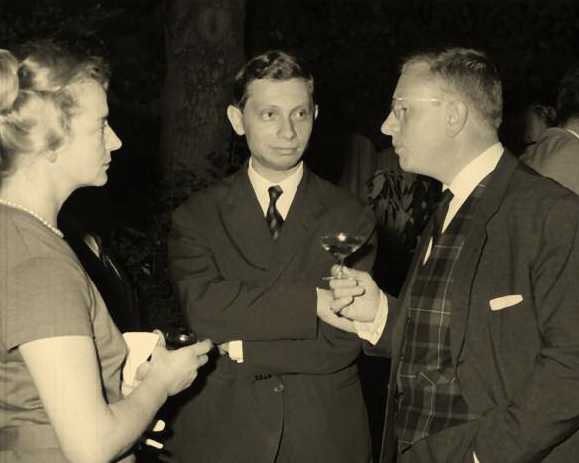
The result of concentrating the administration in the hands of a single person was to tie the operational facilities of the IPSA to the position of its Executive Secretary in his base institution. Jean Meynaud thus used his secretary at the Fondation for Association work and even used the FNSP’s stationery for his IPSA correspondence.
The fact that the secretariat was essentially one person had a symbolic as well as an operational impact. It added to the burden that successive Executive Secretaries bore by turning them into the incarnation and institutional memory of the IPSA. This development was partly due to the fact that they held the job for such a long time. Except for François Goguel, who was a special case, they stayed in their post for at least five (Jean Meynaud, John Goormaghtigh) and as many as twelve years (John Trent)—far longer than the three-year term of the President of the Association. Furthermore, their involvement in the IPSA was not restricted to their term as Secretary. Jean Meynaud was a member of the Executive Committee from 1955 to 1958. John Goormaghtigh was involved from the very beginning as one of the founding members. John Trent was chairman of Research.
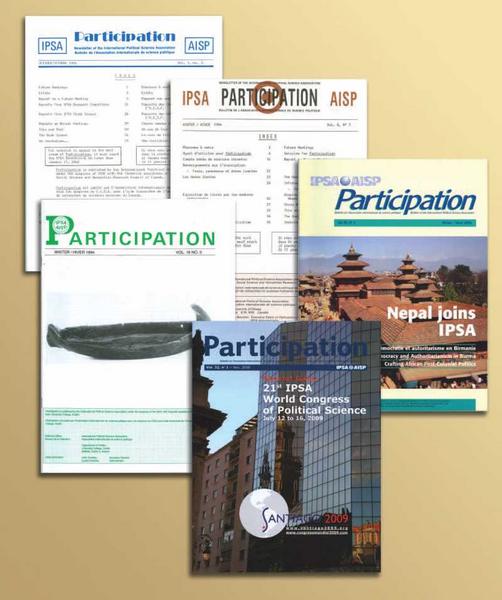
The secretariat’s symbolic importance also stemmed from its crucial historic role in the growth of the Association. As the excerpt from the letter from Jean Meynaud that introduces this chapter illustrates, the Executive Secretary played a proactive role in the development of international political science by sending vast numbers of letters to every corner of the world in search of “National Associations or simply groups representing specialists in political science.” 16 The sea or ocean that lay between the President and Secretariat of the IPSA for the first nine years of its existence furthermore led the Executive Secretary to consult the President only on particularly sensitive or political issues and to de facto extend his own prerogatives.
Not until the late 1960s did the Executive Secretary begin to acquire more resources to carry out his mission. André Philippart (Université Libre de Bruxelles, 1967–1976), John Trent (University of Ottawa, 1976–1988), Francesco Kjellberg (University of Oslo, 1988–1994), John Coakley (University College, Dublin, 1994–2000), and Guy Lachapelle (Concordia University, Montreal, 2000 to present) now had the title of Secretary General. From 1962 on, they were assisted by a full-time administrator. This position has been held successively by Michèle David (1962–1967), Michèle Scohy (1967–1976), Liette Boucher (1976–1988), Lise Fog (1988–1994), Louise Delaney (1994–1998), Margaret Brindley (1998–2000), Christian Gohel (2001–2003), Stéphane Paquin (2003–2004), Aubert Descôteaux (2004–2007), and Andrea Cestaro (2007–2009). In 2000, when Guy Lachapelle assumed the post, a real team took over management of the Association. Two people could no longer handle the IPSA’s increased membership and extensive activities, which included organizing Congresses, Symposiums and Round Tables; managing the Web site; and publishing Participation (the IPSA bulletin). This critical development was notably made possible by the support of Montréal International, an organization based on a public-private partnership, one of whose goals is to attract international organizations to Montreal in order to enhance its international standing. 17
Only recently has the secretariat thus acquired the human and logistic resources it needs to fulfill the many prerogatives it has had since the Association was founded. Together with the effective, routinized operations of the Council and the Executive Committee and easier contact between the President and the Secretary due to the development of transport and telecommunications, these additional resources now provide the IPSA with all the internal components of a scientific organization in full working order. Furthermore, as we shall see, progress in its external relations has resulted in the transformation of its missions.
2.2. Obtaining external recognition
The new budget of [UNESCO’s] social science department seems to be much more directly geared to technical assistance to states.… What is more, it must be admitted that the subjects selected by the social science department have more to do with the socio-psychological disciplines than with traditional studies in political science, law or economics. Once again, we can bear out the serious consequences of the fact that no political scientist, no economist worthy of the name, is on the staff of the department, which is dominated entirely by individuals with a sociological bent… not to mention by out and out ignoramuses.[Translation]
Jean Meynaud
Executive Secretary of the IPSA,
20 July 1954.
While the IPSA cooperated with a number of organizations, UNESCO, naturally enough had a special place in its external relations. As the Association’s mother institution, UNESCO has been both a resource and a source of tension. In the former role, it has, first and foremost, been a funding agency. UNESCO was thus not only the prime mover behind the meetings of 1948 and 1949 but was also responsible for bringing political scientists from a number of countries to them. During the IPSA’s early years, the bulk of its funding came from UNESCO through the International Social Science Council, a body to which we shall return later. These financial contributions were doubtless welcomed by the Association’s Executive Committee. However, they also stoked fears for the independence of researchers who were being largely funded by a political organization. Raymond Aron gave voice to these fears very early on when he “indicated, and was very insistent on the point, [that the IPSA] should not be a dependent organization of UNESCO but an autonomous Association that simply enjoyed its patronage.”18 UNESCO showed itself sensitive to these concerns when its Director-General, Jaime Torres Bodet, declared that the “creation of associations like those you are contemplating seems to Unesco to be the best way of helping scientists to work together without unduly limiting their freedom of action.” 19
 Relations between the IPSA and UNESCO would long be marked by an underlying tension between financial need and fear of domination. This tension was reflected in the comments made by an irritated Jean Meynaud to Marcel Bridel on 4 February 1952:
Relations between the IPSA and UNESCO would long be marked by an underlying tension between financial need and fear of domination. This tension was reflected in the comments made by an irritated Jean Meynaud to Marcel Bridel on 4 February 1952:
I understand perfectly your feelings regarding Unesco’s working methods. I personally share them, probably even more strongly. The most awful thing about the place is the uncertainty of the final outcome… All that is obviously disappointing and, all things considered, rather annoying. The time wasted on legwork and phone calls would be so much better spent on more substantive work. [Translation]
Financial independence was therefore a priority of Executive Committees and Secretaries of the Association from the start: “I do not want an association which should remain really international from every standpoint to rely solely on a single source of funding. That’s why I’m trying to expand our financial base as much as possible.” 20 Achieving this goal was no easy task, though, for unlike other academic organizations such as the European Consortium for Political Research (ECPR), the IPSA membership on its own did not have the financial capacity to support the Association’s development. Apart from the American Political Science Association, the funding available to the national associations (the collective members) was so limited by their all-toosmall memberships that in 1976 an equalization fund was established to help the poorer ones.
Attempts to obtain alternative financing from major American and other foundations bore only occasional fruit (from Ford, Volkswagen, and Rockefeller) but no long-term grants. The IPSA thus long had to cope with structural budgetary problems that sometimes impinged directly on its activities. Thus, in the 1950s, meetings of all the members of the Executive Committee were rarely possible because the travel expenses for non-Europeans were simply too onerous. In late 1952, money was so tight that Jean Meynaud had to suspend taking his salary. In 1963, faced with the high costs of organizing the 1964 Congress, Serge Hurtig suggested saving money by not paying the travel expenses of the members of the Executive Committee; this problem was eventually settled by raising the registration fees. In the late 1970s and early 1980s, the bold endeavors of the Moscow and Rio de Janeiro Congresses left the IPSA in deficit for an extended period.
It was only from the early 1990s, when a Committee on Financial Structure was established within the Executive Committee, that the Association ceased operating on the basis of an ongoing deficit that would be periodically covered. This long-sought stability was due to the increasing financial viability of the Association’s activities. The International Political Science Abstracts and the International Political Science Review (IPSR) ran surpluses; major sponsorships helped fund some of the World Congresses in the 1990s and 2000s; and the secretariat benefited from the partnership with Montréal International. It was, indeed, high time the Association attained financial stability, considering the change of philosophy at UNESCO regarding international associations; from 1995 on, the system of permanent annual grants gave way to project-based funding.This financial viability, acquired after a long struggle, combined with a more stable political and administrative structure to create the image of an Association with solid organizational foundations. Today, the IPSA thus has the institutional resources it needs to fulfill its various missions. Although this critical development has been dealt with in isolation here, it was clearly integrally related to developments on the scientific and geographic fronts, and it is to these that we shall now turn our attention.
Notes
- Under Article 11 of Constitution the Council is made up of representatives of the collective members and of “individual Members of the Association designated by the Executive Committee from countries or regions where there is no collective Member, provided that such individual Members shall not exceed the total number of representatives of collective Members on the Council.” (ibid.)
- IPSA, Council Meeting–Montreal, August 19th, 23rd, 24th, 1973.
- Letter from Jean Meynaud to William A. Robson, 11 February 1952. Translation.
- Letter from John Goormaghtigh to James Pollock, 8 January 1958.
- Letters from Jean Meynaud to various addressees, March–May 1950.
- The mission of Montréal International (MI) is to contribute to the economic development of Metropolitan Montreal and increase the region's international status. The realization of this general objective involves action on five mandates: increasing direct foreign investment, facilitating the relocation of strategic foreign workers, supporting the development of innovation, accelerating the development of strategic clusters, and increasing the presence of international organizations. It was this last mandate that led MI to support the IPSA’s move to Montreal. The Association is not alone, however, in benefitting from MI’s support, and it is now advancing in company with some sixty international organizations, such as the eminent Institut de Coopération pour l’Education des Adultes (ICEA), the International Civil Aviation Organization (ICAO), and the World Anti-Doping Agency (WADA).
- Association Française de Science Politique, Réunion d’information relative à la constitution d’une association française de science politique, Paris, 6 November 1948.
- UNESCO, International Political Science Association Conference. Summary Record of the first meeting held at Unesco House, 19 Aavenue Kléber, Paris 16e, on 12 September 1949 at 11 a.m. Paris, UNESCO, 25 October 1949.
- Letter from John Goormaghtigh to Kazimierz Szczerba-Likiernik, 23 December 1955. Translation.






